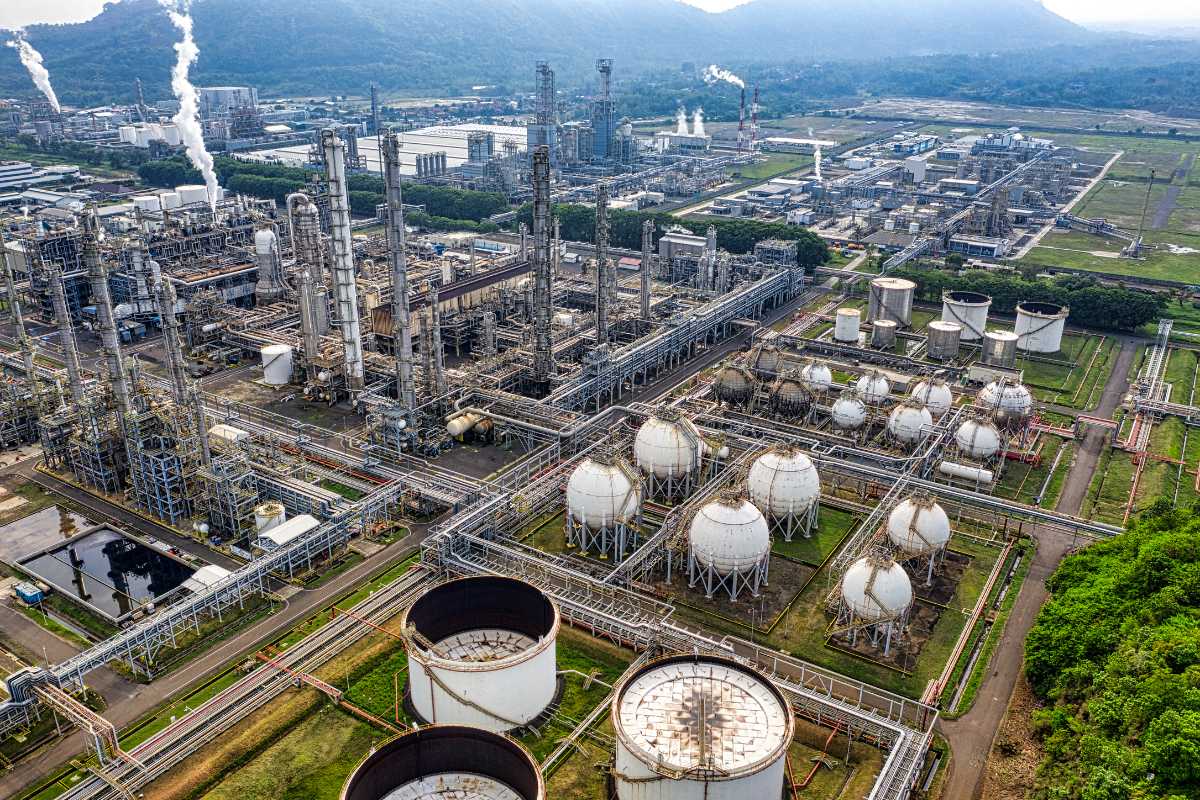Factories of the Future: How Sustainable Manufacturing Drives Profit and Planet
The manufacturing sector has long been considered the backbone of global economies. From cars and electronics to textiles and pharmaceuticals, factories are where innovation meets production. Yet, this backbone has also carried the weight of environmental challenges, carbon emissions, resource depletion, and industrial waste.
But change is in motion. The rise of sustainable manufacturing is reshaping how factories operate, proving that environmental responsibility and profitability are not mutually exclusive. In fact, they are increasingly interdependent. The factories of the future are those that prioritize efficiency, innovation, and sustainability, creating systems that drive both business growth and planetary health.
This article explores how sustainable manufacturing is redefining the industrial landscape, the technologies enabling it, the financial case behind it, and what the future holds for factories that choose to go green.
The Shift Toward Sustainability in Manufacturing
For decades, manufacturing was measured primarily in terms of output and efficiency. The faster and cheaper goods could be produced, the better. However, rising concerns over climate change, stricter regulations, and shifting consumer preferences have changed the equation.
- Consumers are demanding transparency. Surveys reveal that over 70% of customers prefer eco-friendly brands.
- Governments are tightening regulations. Carbon taxes, emissions caps, and waste reduction targets are becoming common.
- Investors are prioritizing ESG (Environmental, Social, Governance). Sustainable operations attract more capital.
The result? Factories worldwide are rethinking their processes, adopting greener practices, and recognizing that sustainability is not just a moral imperative, it’s a business opportunity.
Defining Sustainable Manufacturing
At its core, sustainable manufacturing is about producing goods in ways that minimize environmental harm, conserve energy, and use resources responsibly. It encompasses:
- Energy Efficiency: Reducing power consumption and transitioning to renewable energy sources.
- Waste Reduction: Minimizing scrap, reusing materials, and creating closed-loop systems.
- Water Conservation: Recycling and reducing water usage in production.
- Cleaner Production: Using eco-friendly raw materials and reducing harmful emissions.
- Circular Economy Models: Designing products and processes that allow materials to be reused or recycled after their lifecycle.
The factories of the future will integrate these principles into their core operations.
The Financial Case: Sustainability as Profitability
One of the biggest misconceptions is that sustainability is expensive. In reality, sustainable practices often reduce costs and drive revenue growth in the long run.
Cost Savings Through Efficiency
- Energy-efficient machinery lowers utility bills.
- Waste reduction cuts disposal costs and material expenses.
- Predictive maintenance (enabled by AI and IoT) reduces downtime and repair costs.
Revenue Growth Through Market Differentiation
- Eco-friendly products often command premium prices.
- Sustainability strengthens brand reputation, attracting conscious consumers.
- Companies gain access to new markets with green procurement standards.
Investor and Stakeholder Benefits
- Businesses with strong ESG practices attract more investment.
- Green manufacturing reduces regulatory risks and penalties.
Key Insight: Sustainability isn’t just good PR, it’s a profit driver.
Technologies Powering Sustainable Manufacturing
The factories of the future are adopting advanced technologies that enable greener, smarter production.
1. Renewable Energy Integration
- Solar, wind, and biomass power are replacing fossil fuels.
- Tesla’s Gigafactories, for example, are designed to run on 100% renewable energy.
2. Industry 4.0 and Smart Manufacturing
- IoT sensors monitor energy and resource usage in real time.
- AI and machine learning optimize production schedules, minimizing waste.
- Digital twins simulate manufacturing processes to identify inefficiencies before real-world implementation.
3. Additive Manufacturing (3D Printing)
- Reduces material waste by building products layer by layer.
- Enables localized production, reducing transportation emissions.
4. Circular Economy Systems
- Factories are adopting closed-loop recycling, where waste materials are reintegrated into production.
- Brands like Adidas have pioneered shoes made from ocean plastic that can be recycled into new pairs.
5. Green Materials and Processes
- Biodegradable plastics, organic textiles, and eco-friendly chemicals are replacing harmful materials.
- Waterless dyeing techniques in textiles significantly reduce water consumption.
These innovations are not futuristic concepts; they are being implemented in real factories today.
Case Studies: Factories Leading the Way
Unilever
The consumer goods giant has reduced CO₂ emissions by more than 50% across its factories since 2008. Through renewable energy and zero-waste initiatives, Unilever proves that sustainability at scale is possible.
Siemens
Siemens has invested heavily in digital factories, using automation and AI to optimize processes. Their focus on energy efficiency and low-emission technologies showcases how industry leaders are reinventing themselves.
Toyota
The automobile manufacturer is a pioneer in sustainable manufacturing. Its facilities use renewable energy, recycle water, and adopt lean practices to minimize waste. Toyota’s goal is to achieve carbon neutrality across operations by 2035.
Patagonia
Known for its sustainability ethos, Patagonia ensures its supply chain and manufacturing processes align with its mission, using recycled materials and investing in circular product models.
These examples show how profit and planet can coexist.
Challenges in Sustainable Manufacturing
Despite its promise, the transition to sustainable manufacturing faces hurdles:
- High Initial Costs: Renewable energy systems, advanced machinery, and green certifications require upfront investment.
- Technological Barriers: Smaller manufacturers may lack access to cutting-edge technologies.
- Supply Chain Complexity: Ensuring sustainability across suppliers is difficult.
- Workforce Training: Employees need reskilling to adapt to new technologies and practices.
- Short-Term vs. Long-Term Goals: Pressure for quick profits can hinder long-term sustainability investments.
Factories must overcome these challenges through strategic planning and collaboration.
The Role of Policy and Global Collaboration
Governments, international bodies, and industry groups play a critical role in shaping sustainable manufacturing:
- Regulations: Enforcing stricter emissions standards and waste management protocols.
- Incentives: Tax breaks and subsidies for green investments.
- Global Standards: Initiatives like ISO 14001 encourage eco-friendly practices.
- Public-Private Partnerships: Joint projects accelerate innovation and implementation.
Collaboration across borders is essential to ensure sustainability goals are met globally.
The Workforce of the Future
Sustainable factories also demand a new kind of workforce:
- Green Engineers: Skilled in renewable energy and eco-friendly processes.
- Data Analysts: Capable of interpreting IoT and AI-driven insights.
- Circular Economy Experts: Focused on lifecycle design and waste reduction.
Upskilling and reskilling workers will be critical to achieving sustainable transformation while maintaining competitiveness.
The Future Vision: Factories as Ecosystems
The factory of the future won’t just be a place of production, it will be an ecosystem.
- Self-Powering Plants: Facilities that generate more energy than they consume.
- Zero-Waste Operations: Closed-loop systems where waste becomes input.
- Localized Manufacturing: Reducing transport emissions by producing closer to demand.
- Transparent Supply Chains: Blockchain technology ensuring sustainability at every step.
This vision combines economic resilience with environmental stewardship.
Conclusion: Profit and Planet Hand in Hand
The narrative of manufacturing is being rewritten. No longer is it a binary choice between profitability and sustainability. The factories of the future are proving that businesses can be profitable, competitive, and eco-friendly all at once.
By investing in technology, embracing circular models, and aligning with consumer and regulatory expectations, manufacturers can unlock opportunities that go beyond compliance, creating lasting value for stakeholders and society.
The race is on, and the winners will be those who recognize that the greenest factories are also the smartest, most profitable ones.
The message is clear: sustainable manufacturing is not just about saving the planet. It’s about securing the future of business itself.













